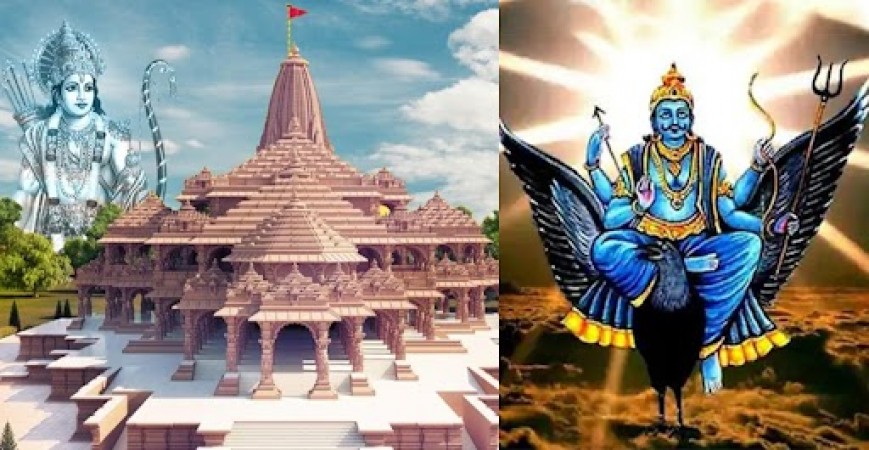
The highly anticipated consecration of Lord Rama's idol at the grand Ram Temple in Ayodhya is scheduled for January 22, 2024, evoking immense enthusiasm across the nation. Devotees eagerly await the moment when Lord Rama will grace the sanctum sanctorum of the magnificent temple and shower his blessings upon the faithful. As the day approaches, several intriguing aspects of the temple's construction have come to light, capturing the attention of devotees and sparking curiosity about its unique features.
One remarkable characteristic of the Ram Temple is the complete absence of iron or steel, both inside and outside the structure. This deliberate choice holds significance both from an astrological and scientific perspective. Astrologers assert that iron is associated with the planet Saturn, and since Lord Rama's exile is believed to have been influenced by Saturn, the use of iron is avoided in the temple construction. Additionally, scientists argue that iron corrodes over time, presenting durability concerns for a structure intended to stand for centuries.
Instead of relying on traditional materials like cement and steel, the entire temple is constructed using meticulously chosen stones. Each stone used in the temple undergoes rigorous testing to ensure structural integrity and longevity. The foundation stones, joined together using copper, contribute to the temple's robustness and resilience against natural calamities such as earthquakes and storms.
The temple's design combines tradition with modern engineering techniques, making it earthquake-resistant and capable of withstanding various natural disasters. Notably, the architects have incorporated a mix of advanced technological innovations while adhering to the temple's traditional design. The temple boasts a unique feature – the use of meter-thick roller-compacted concrete (RCC) for flooring, providing stability and strength.
A distinct aspect of the construction process is the avoidance of the metal iron, which is traditionally linked with Saturn. In Hindu belief, the presence of Shaligram stones wards off Saturn's influence; hence, these stones are used in the temple, ensuring that iron is not incorporated. The image of Lord Rama inside the temple is crafted from Shaligram, further supporting the decision to eschew the use of iron.
Copper, symbolizing the sun, is chosen as a substitute for iron. According to Hindu beliefs, copper is auspicious, attracting positive energy and ensuring perpetual prosperity. The use of copper in joining the stones reflects the temple's commitment to aligning with astrological and scientific principles.
From a scientific standpoint, the exclusion of iron is justified by its susceptibility to corrosion over time. Given that the Ram Temple is intended to stand for thousands of years, the architects opted for copper and other durable materials to enhance the structure's longevity.
In conclusion, the construction of the Ram Temple in Ayodhya showcases a harmonious blend of tradition and modernity, guided by astrological beliefs and scientific rationale. The decision to avoid iron, utilize Shaligram stones, and incorporate copper highlights the meticulous planning and thoughtful consideration that went into making the temple not just a place of worship but a symbol of endurance and devotion for generations to come.
Check Out These Five Nourishing Foods for Kids, Each with its Own Set of Nutrient-Packed Goodness
How Swami Vivekananda's Connection to Yoga Creates Harmony of Mind, Body, and Soul
These diseases surround the body due to eating too much salt, know the way to avoid it